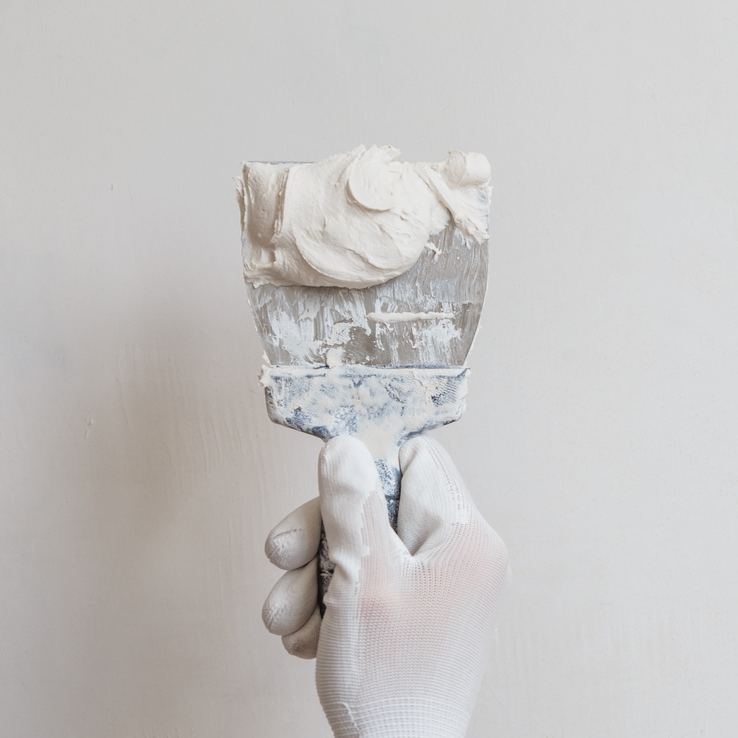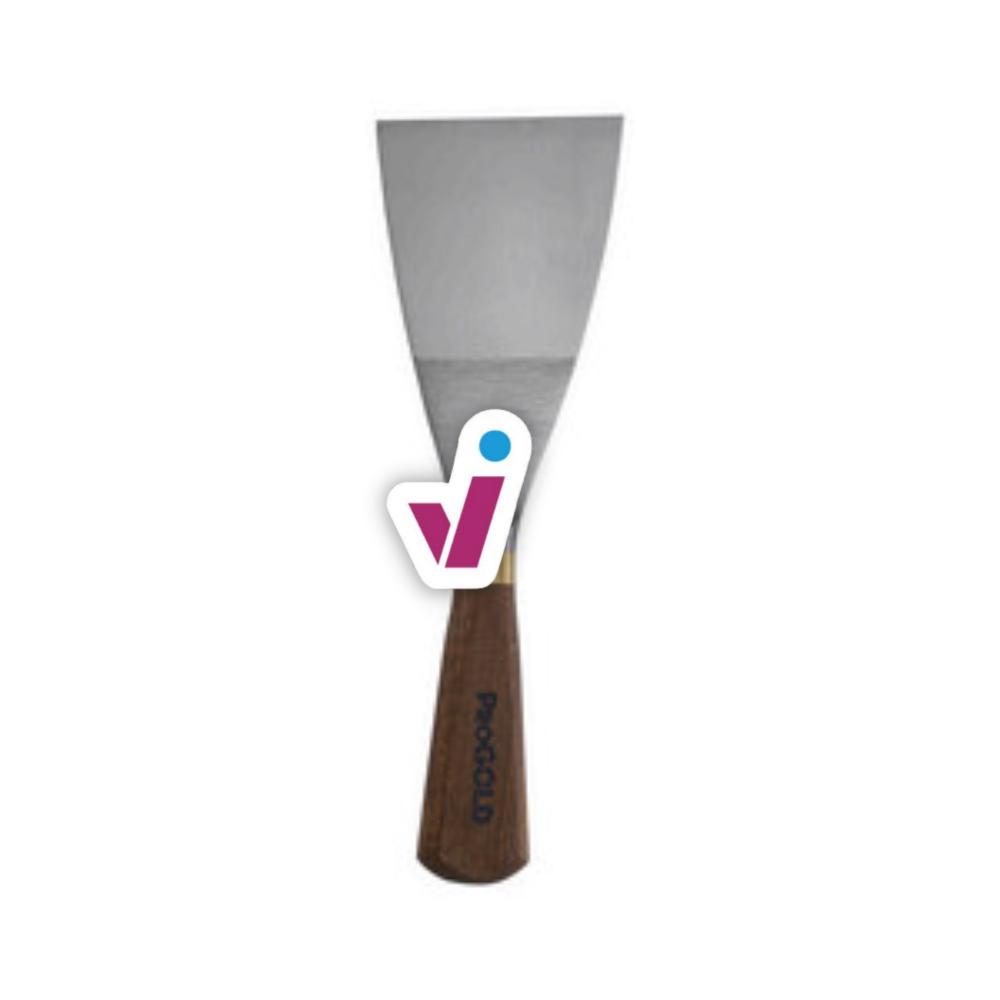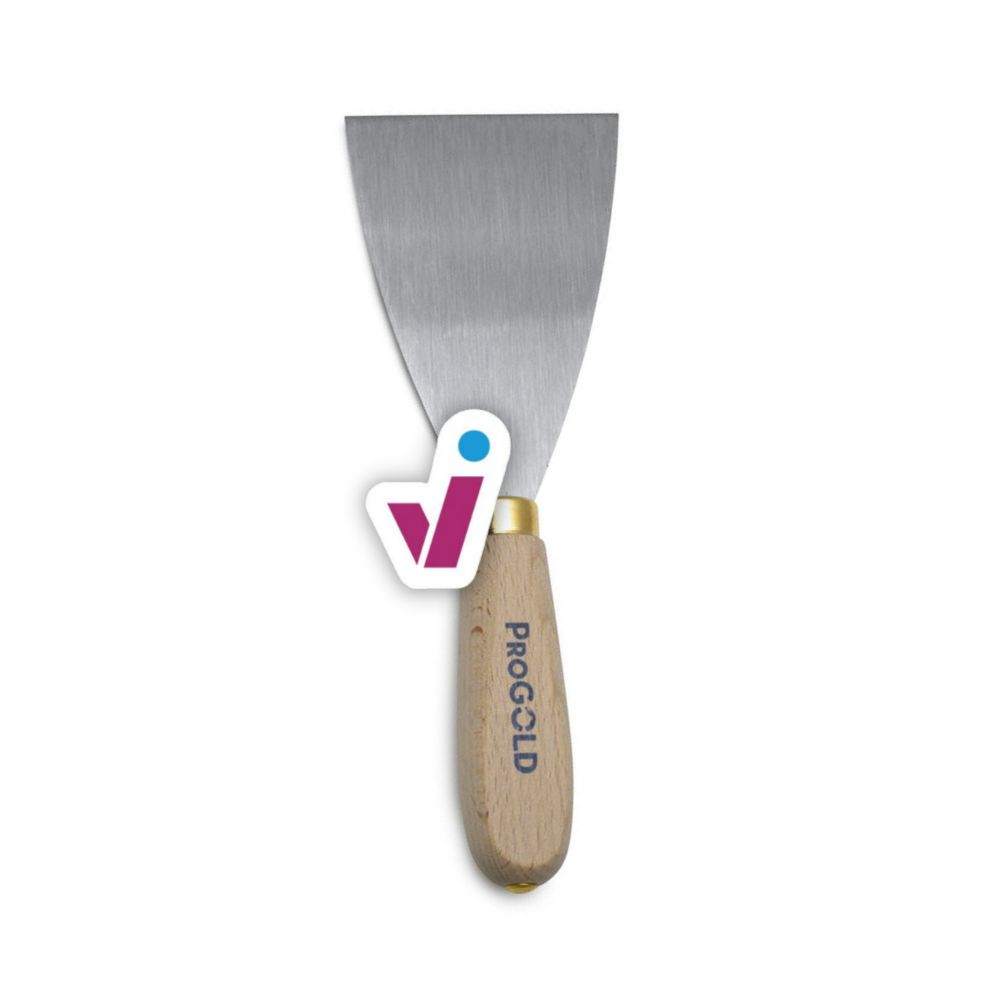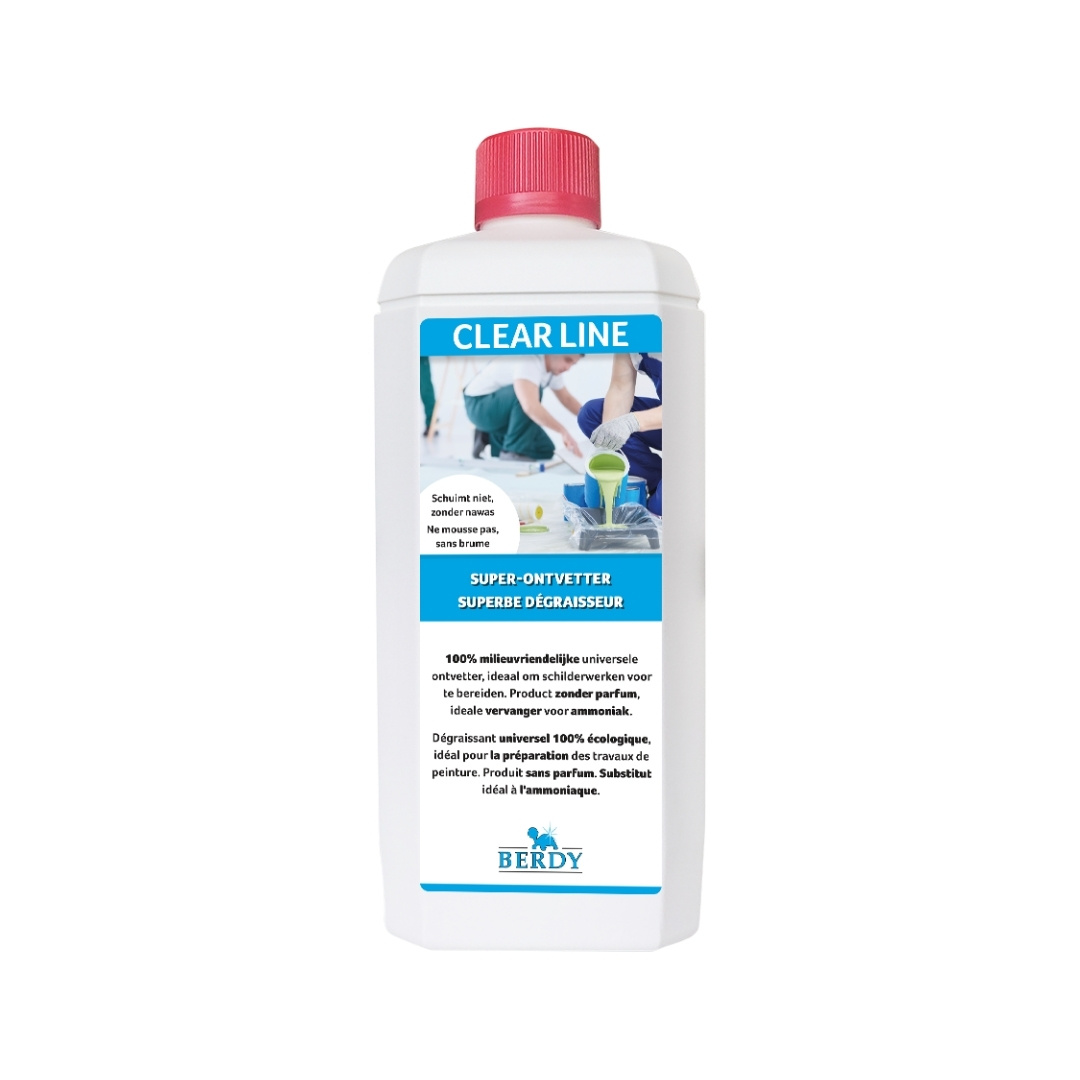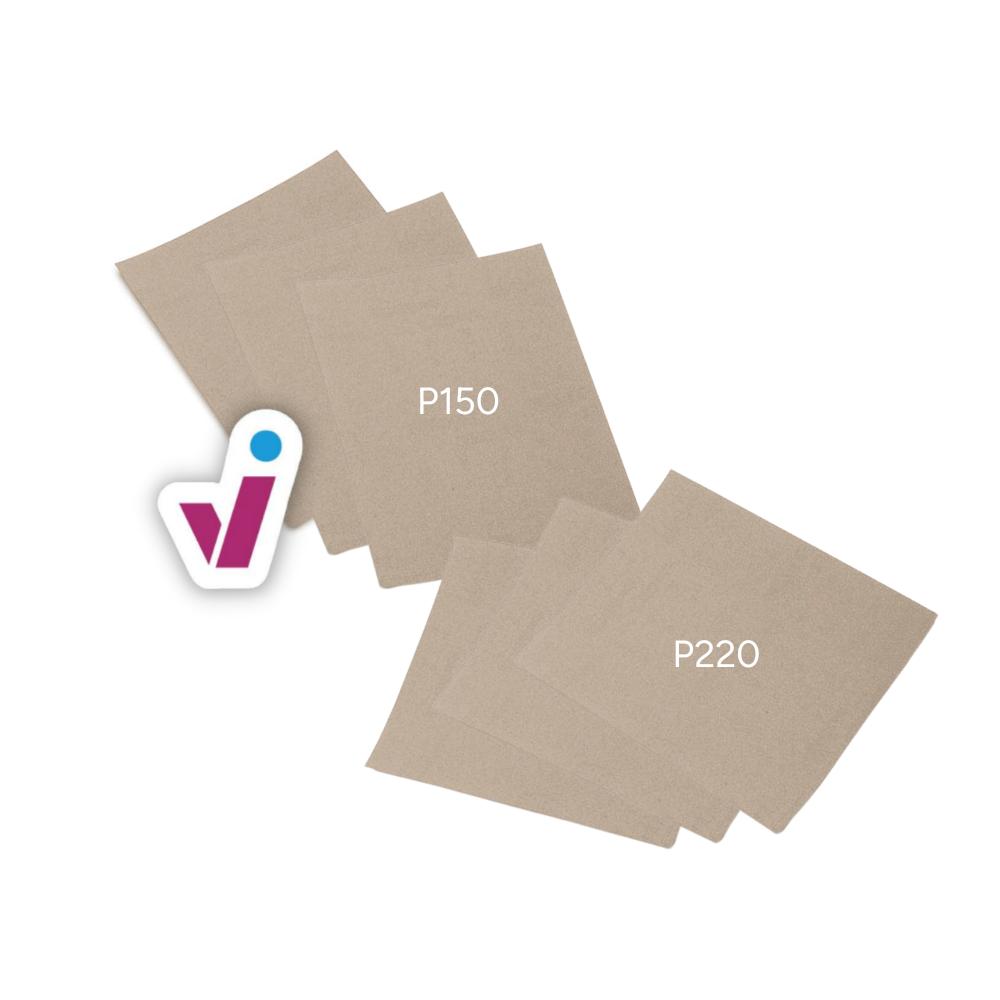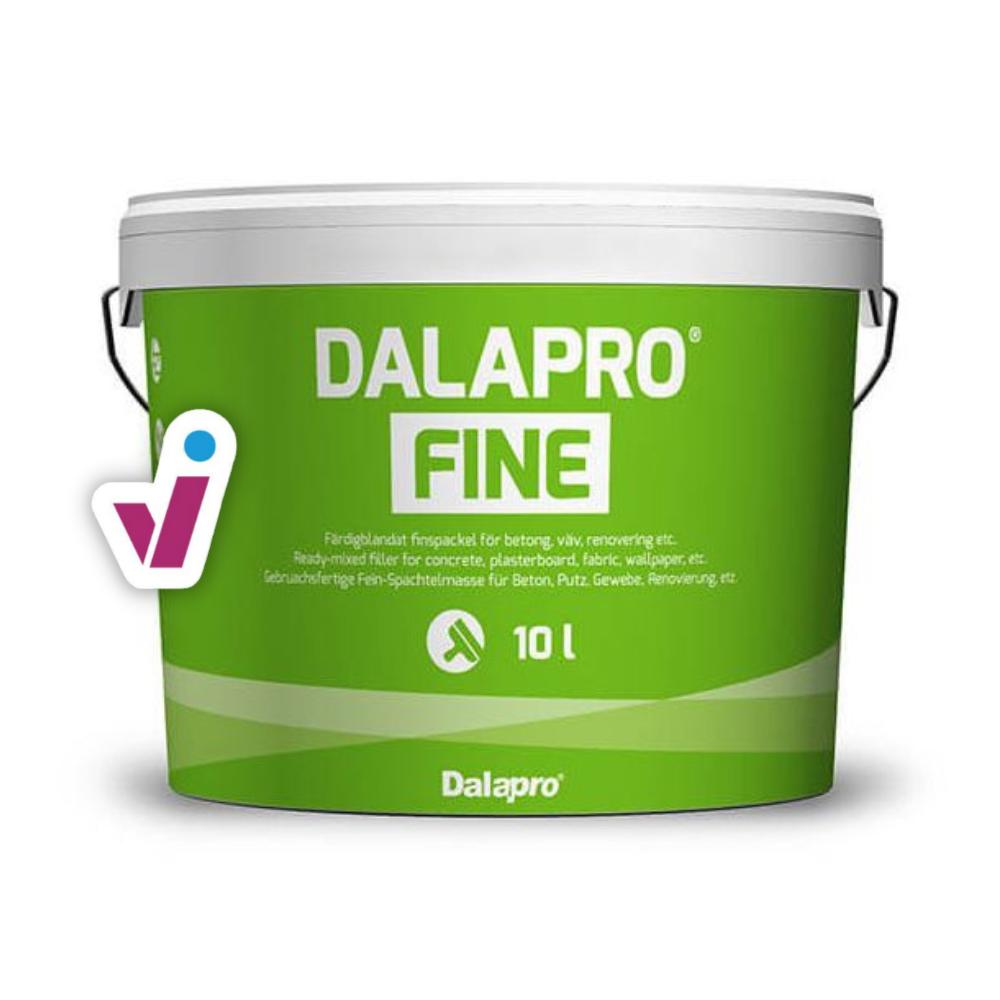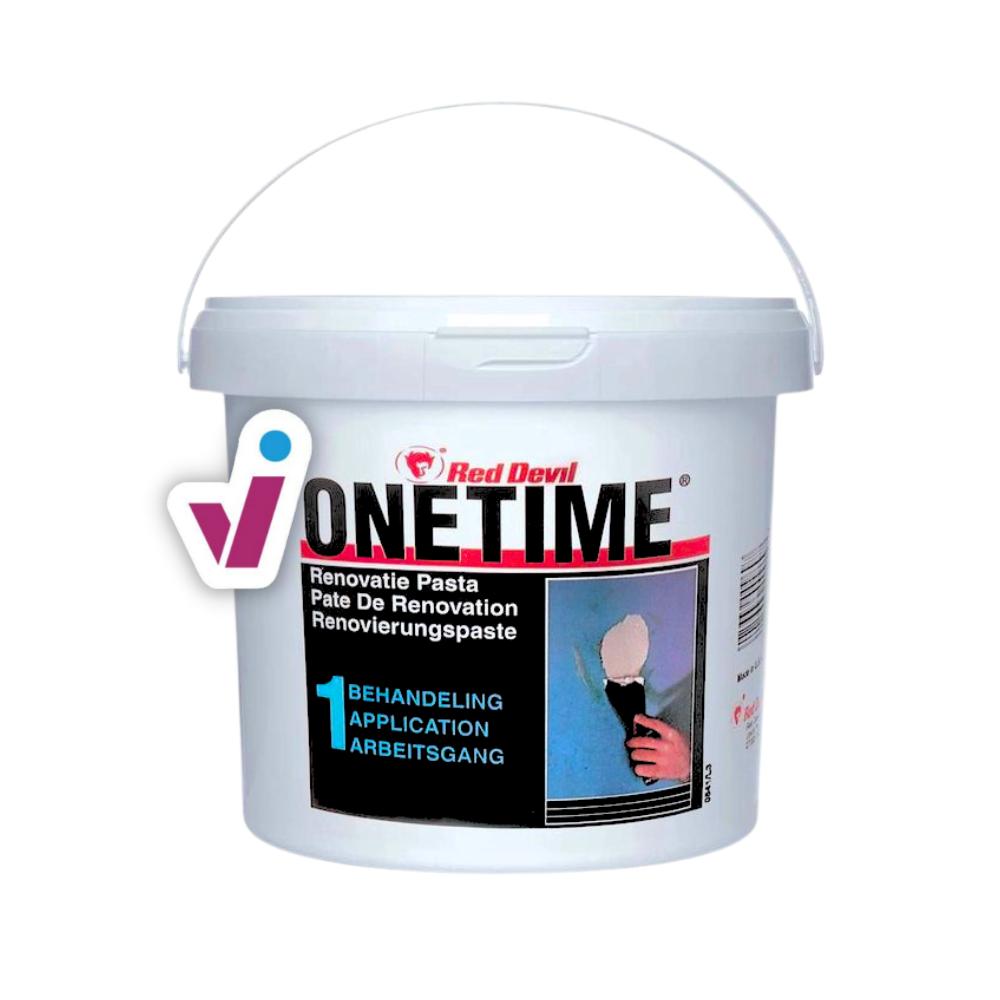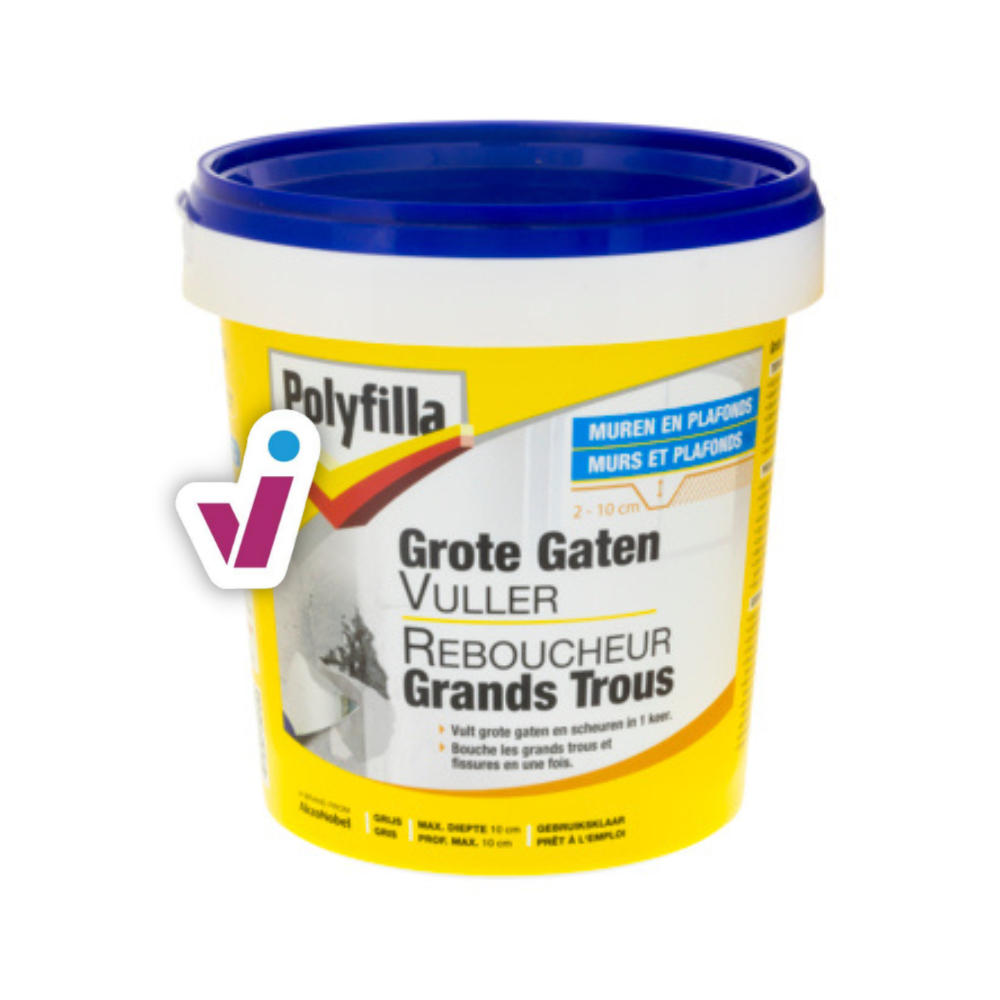What is the best way to putty?
Filling a hole in the wall or repairing a crack in the wall, you can do it yourself. You are sometimes asked to do it when you leave a rental property, for example.You do it to make the wall paint-ready. Your paintwork will look much better on an even surface.
Let us immediately answer that other question: is puttying difficult? Not at all, as long as you know what you are doing. And of course you will find out here 😉
Also be sure to read further below the steps about the difference between putty and plastering.
Step 1: preparing for filling
- Clean the area around the hole in the wall
- Prepare the hole or crack itself for filling
- Prepare the filler (if working with powder)
Before you get started filling: we start with a clean slate, literally. If you want to plug holes, first go about degreasing and dusting the surrounding area thoroughly.
Also check if you see any loose pieces of wall or plaster. Is that the case? Then remove them by carefully poking them off with a stabbing knife or your putty knife.
Are you going to fill a drill hole that still contains an old plug? Then take it out first. You do this by inserting a screw and pulling it out of the wall with the plug around it.
For a large hole in the wall, you can apply some mesh or fibreglass tape beforehand. This will give your filler extra support later.
You can then touch up a crack that has an erratic shape with a triangular scraper. Pass it through the crack several times to get a V-shape. You can apply your putty more easily from there.
Sharp edges or bits that still stick out can be neatly removed with some sandpaper. In other words, you are already smoothing out the surface.
Get your materials ready too. Use a decent putty knife that is a little wider than the diameter or width of the damage. Work gloves are not a must, but will help you work cleanly.
If you use powder putty, the first thing you need is a container to mix your powder and water in. Most convenient is a round or oval container, or one with rounded corners. Then you have the least chance of something not being mixed properly somewhere in the corners.
So, if you are working with a powder, you are now going to make your putty or filler. You can usually find the correct ratio of powder and water on the packaging. And if not, it will be mentioned in the product's technical data sheet.
The easiest way is to put the right amount of water in your mixing bowl first. Make sure you add the powder carefully and gradually. Meanwhile, keep stirring in the water/mixture. That way you are less likely to have lumps and definitely have the right ratio.
With pastes, it's simple: open the jar or tube and you're good to go! Indeed, with ready-to-use putty, you don't have to do anything yourself.
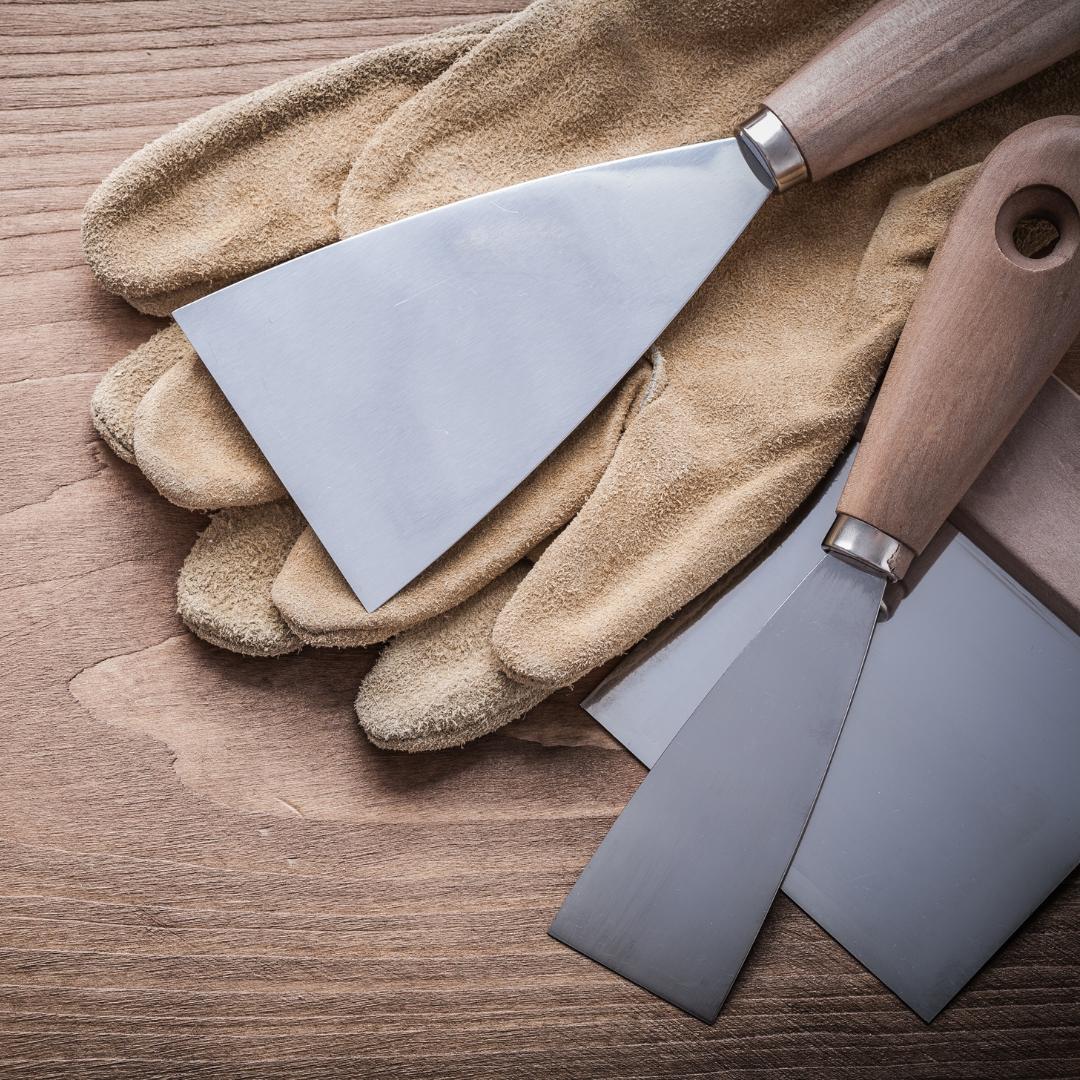
Step 2: filling the holes in the wall
- Apply the filler with your putty knife
- Push it in / over the hole
- For larger damage, work in multiple layers
Do you have a deep (drill) hole? Then it is best to 'pre-fill' it. Use small wads of paper that you dip in the filler. Carefully put these in the hole until you have about 5 mm to go.
Next, you can get to work with your filler. Take some on your putty knife. Some people like to use two knives. One to pick up putty, and one to apply it.
For smaller holes, make the angle between your surface and the putty knife about 45°. Thus, you use the knife's straight edge to scrape away excess putty. While the flat surface smooths the putty neatly into the damage. The further you spread the putty, the flatter you may hold the knife.
Are you filling large damages, such as large holes and wide(er) cracks? Then pull the putty knife slightly flatter, so you can push the filler well into the opening. In other words, you mainly use the flat surface of the putty knife.
When drying, filler always shrinks a little, which is completely normal. So it's best to add a little filler afterwards. It is also better not to try to fill everything at once. It is best to work with 2 to 3 layers of approx. 1 mm for small holes.
The bigger the damage, the more layers, of course. With large holes, it is best to fill from the centre outwards. Certainly also let the filler dry well between layers.
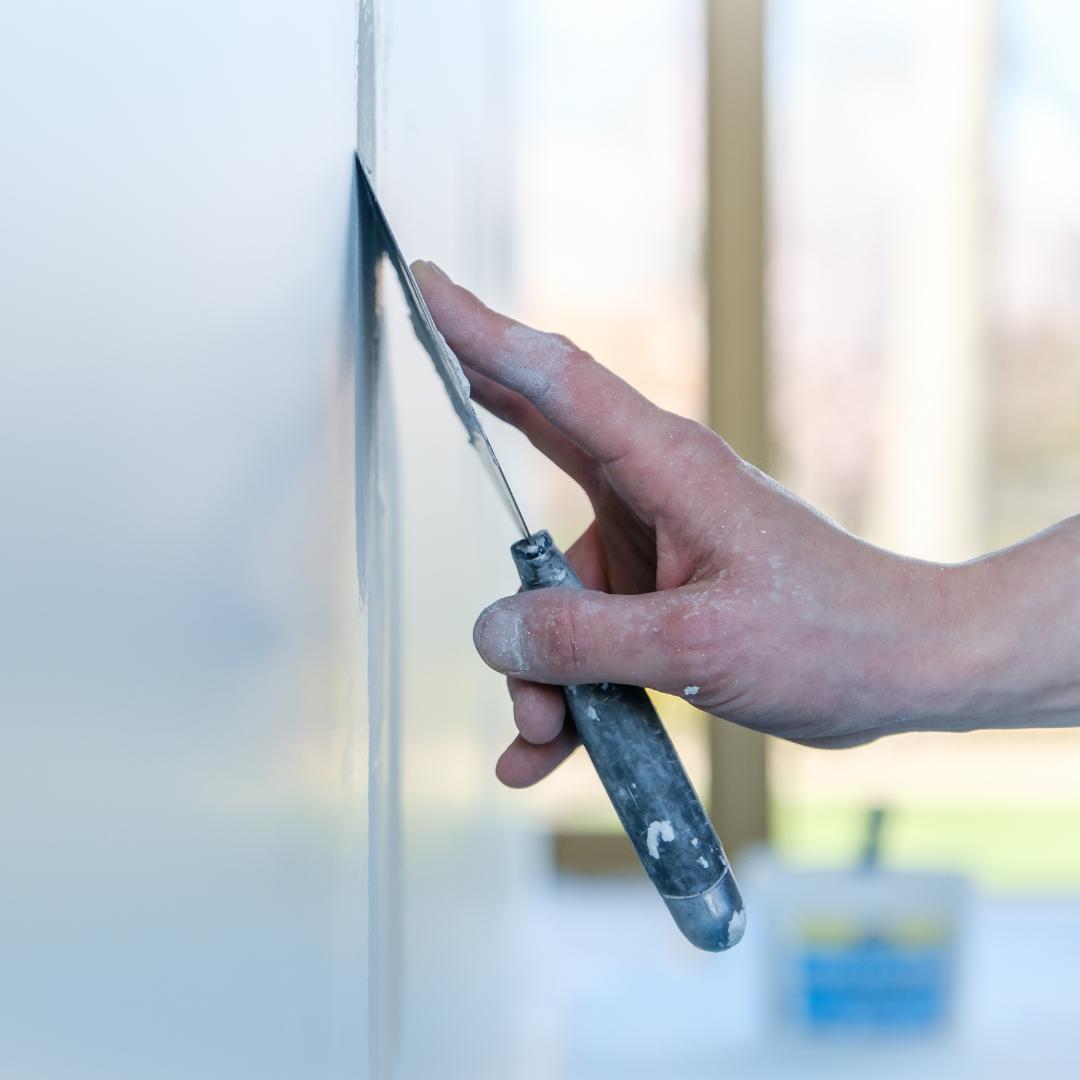
Step 3: finishing
- Lightly sand a bit
- If necessary, apply a coat of fine putty
See, that was the main work: preparing and filling in holes in the wall. We are almost done. Only finishing now. A bit like a gourmet dish 😊
If necessary, you can do some more sanding. You do this when the filler has fully cured, but not all bumps are gone yet. Use some medium sandpaper (e.g. 150 or 180 grit) or a sanding block.
Before painting, you should also lightly sand your filler. Do this with a fine grit sandpaper (e.g. 220). That way you will get the best result!
You can also apply another layer of fine putty to give everything a super fine finisher. This is certainly not necessary, but can help to dot some i's.
Done! Now you can start painting or wallpapering! Did you have to fill a lot of holes in the wall and put a lot of putty on the wall? Then it is a good idea to use a good, opaque primer. This will ensure good adhesion and prevent differences in colour and gloss.
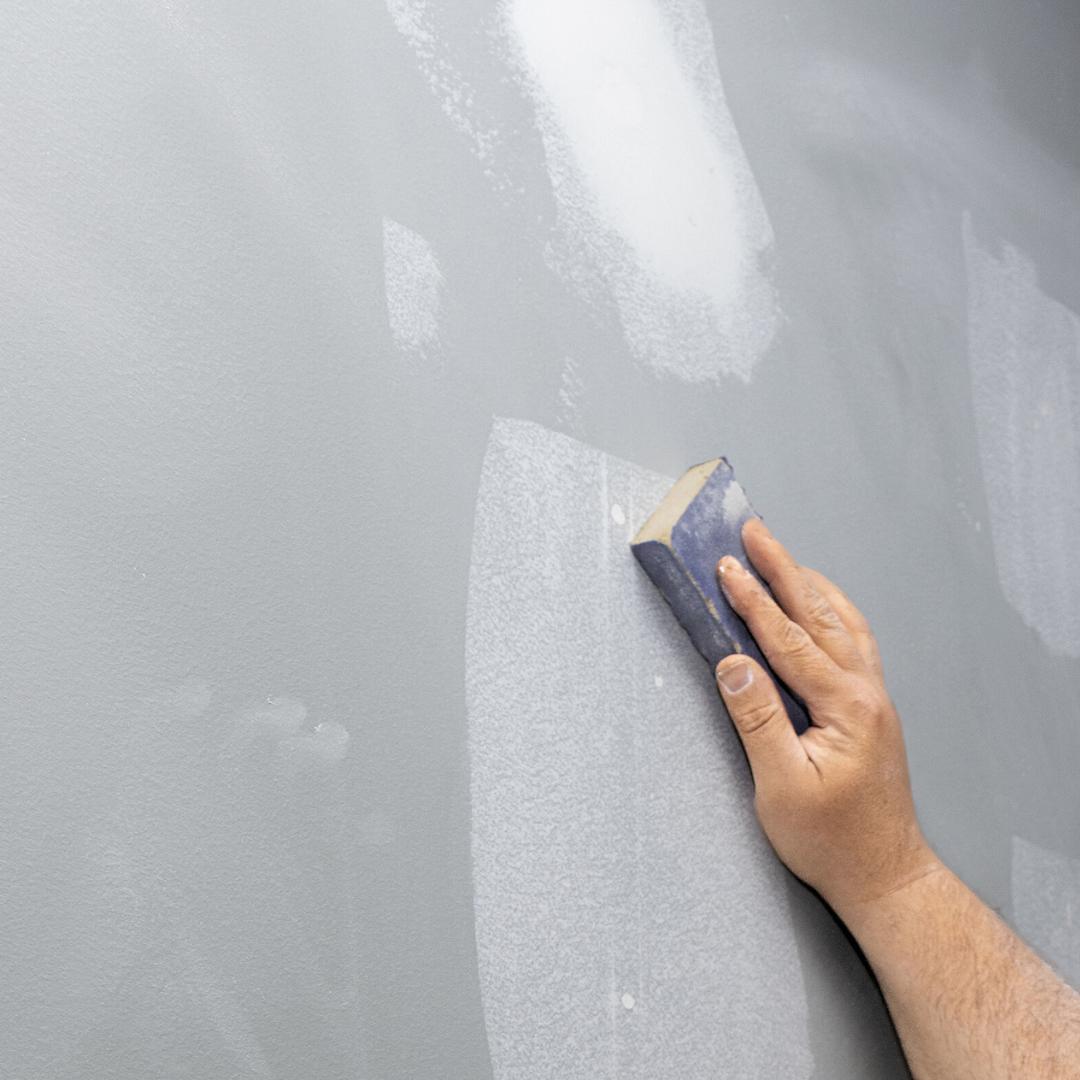
What is the difference between plastering and puttying?
Plastering is finishing an entire rough wall with plaster (gypsum), also known as 'occupying walls'. A plastered wall forms an even surface ready for painting or wallpapering.
Putty, on the other hand, is the local filling of holes in the wall. Or cracks or other small damages and unevennesses. You then use a special filler to fill the holes in the wall.
So what is between plaster and finishing putty? Plaster is a base layer to cover and level the entire wall. Finishing putty is more of an extra layer to perfect details. It often comes on a wall that has already been plastered or previously finished.
Get started with the right material
There are lots of different products: filler, levelling filler, finishing filler, paint filler, plaster... What exactly do you need to fill those holes? A good filler, of course! Below is our selection for small and large holes.
Still got another job ahead of you? In our category with putty, sealants and fillers, you can also do a test to see which product you need. Or, of course, you can delve further into the world of putty in our paint guide. You will find the right product for each surface.
Ready to start puttying?
In this video by Polyfilla, you can see a small crack and a few smaller holes being filled. And how easy that is.


